Adjacent bodies of water Venetian Lagoon Region Veneto Population 17–30 (2015) Opened 1740 Adjacent body of water Venetian Lagoon | Area 3 ha (7.4 acres) Commune Venice Ethnic groups Armenians (primarily) Province Province of Venice | |
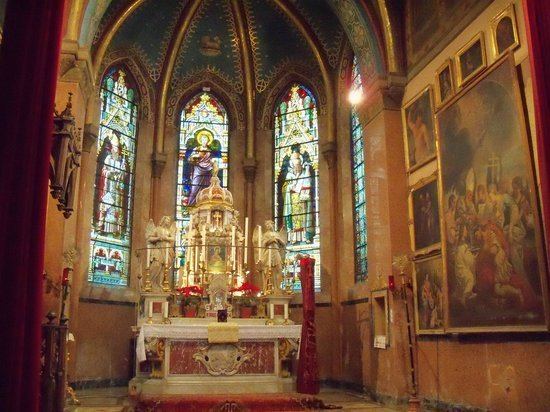 | ||
Similar Venetian Lagoon, San Servolo, Vignole, Sant'Erasmo, San Giorgio Maggiore | ||
Venice armenian island san lazzaro degli armeni
San Lazzaro degli Armeni ([ˈsan ˈladdzaro ˈdeʎʎ arˈmeːni]; lit. "Saint Lazarus of the Armenians", Armenian: Սուրբ Ղազար, Surb Ghazar) is a small island in the Venetian Lagoon. It lies 2 km (1.2 mi) to the southeast of Venice proper and west of the Lido and covers an area of 3 hectares (7.4 acres).
Contents
- Venice armenian island san lazzaro degli armeni
- Venice armenian island san lazzaro degli armeni the church
- Middle AgesEdit
- 18th 19th centuriesEdit
- 20th century and beyondEdit
- Current stateEdit
- The monasteryEdit
- CollectionsEdit
- Publishing houseEdit
- SignificanceEdit
- Role in Armenian historyEdit
- Rose jamEdit
- Notable visitors and residentsEdit
- References
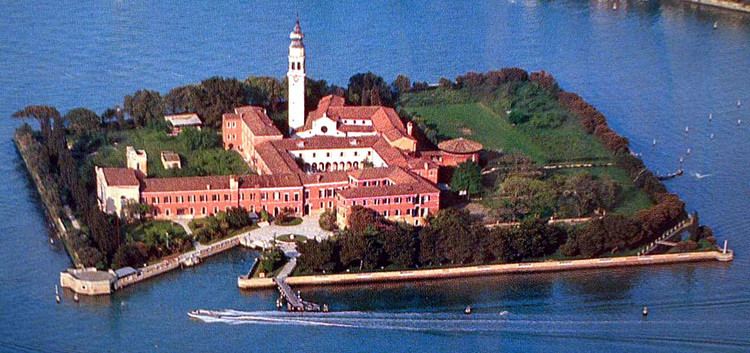
A leper colony during the Middle Ages, the island has been home to an Armenian Catholic monastery since 1717 when the Republic of Venice ceded it to Mkhitar Sebastatsi (Mechitar) and his followers. It is the headquarters of the Mechitarist Order and, as such, one of the world's prominent centers of Armenian culture and Armenian studies especially during the 18th and 19th centuries. Numerous important publications were made in the island by Mechitarist monks which made it an early major center of Armenian printing.
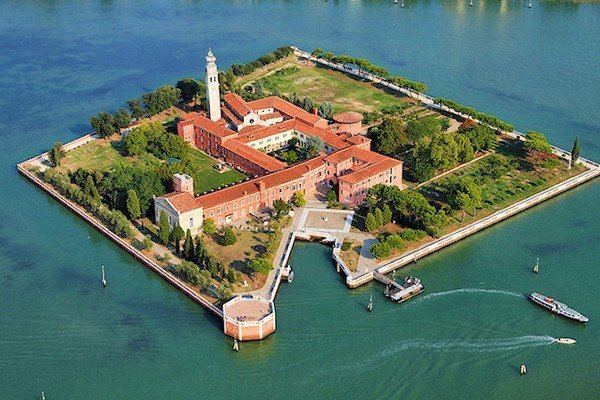
The island is one of the best known historic sites of the Armenian diaspora. The monastery has a large collection of books, journals, artifacts, and the third largest collection of Armenian manuscripts. Over the centuries, dozens of artists, writers, political and religious leaders have visited the island. Nowadays, it attracts tens of thousands of tourists annually.
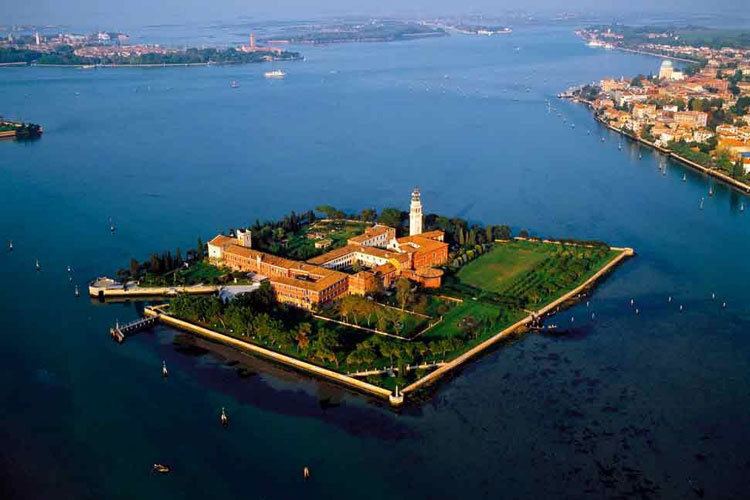
Venice armenian island san lazzaro degli armeni the church
Middle AgesEdit

In 810 the Republic of Venice allocated the island to the abbot of the Benedictine Monastery of St. Ilario of Fusina. In 1182 a leper colony (hospital for people with leprosy) was established at the island. It was chosen for a leper colony since the island is relatively far away from the principal islands forming the city of Venice. It received its name from St. Lazarus, the patron saint of lepers. In 1348 the leper colony was renovated and a church dedicated to San Lazzaro was built. The hospital was moved to Venice in 1595 and the island was gradually abandoned. In the 17th century the island was leased to various religious groups. By the early 18th century only a "few crumbling ruins" remained in the isle.
18th-19th centuriesEdit

In 1701 Mkhitar Sebastatsi (Mechitar or Mekhitar), an Armenian Catholic monk, founded a Catholic order in Constantinople that would later be named after him. The order moved to Modon (Methoni) in the Green peninsula of Peloponnese in 1703, after repressions by the Ottoman government and the Armenian Apostolic Church. In 1711 the order received recognition by Pope Clement XI. In April 1715, a group of twelve Armenian Catholic monks led by Mkhitar Sebastatsi arrived in Venice from Morea, Peloponnese, following its invasion by the Ottoman Empire. The Venetian Admiral Mocenigo and Governor of Morea, Angelo Emo "sympathizing deeply with the fearful distress of the unfortunate community, yielded to their earnest entreaties for permission to embark on a government vessels which was about to leave for Venice."
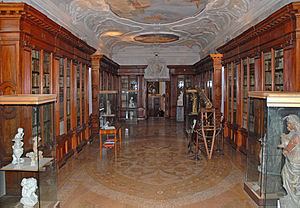
On September 8, 1717, the Venetian Senate ceded the island of St. Lazarus to the Mechitarist order. "The Armenian Monks at once hastened to occupy the ruins on the Island... and the Abbot ordered the most necessary repairs to be at once made on the crumbling and dilapidated buildings which still remained." The Armenian monks were required not to rename the island. Upon acquisition the construction of a two-storey Armenian monastery began. The preexisting church of St. Lazarus was renovated. Gardens, residency buildings, a seminary and other structures were constructed. The construction of the monastery was completed by 1740. Mkhitar Sebastatsi died in 1749 and was succeeded by Stepanos Melkonian of Constantinople whose tenure as abbot ended 1799.
The Venetian Republic was disestablished by Napoleon in 1797, however, the Mechitarist congregation was "left in peace", allegedly because of the "presence of an indispensable Armenian official in Naopleon's secretariat." In 1810 Napoleon signed a decree, which declared the congregation may continue to exist as an academy.
The island has been enlarged several times. In 1815 by the permission of the Austrian Empire the island's size doubled from around 7,200 m2 (77,500 sq ft) to 14,400 m2 (155,000 sq ft).
During the 1848 revolutions in the Italian states a small garrison was stationed at the island.
William Dean Howells described the island and the monastery in 1866 as follows: "As a seat of learning, San Lazzaro is famed throughout the Armenian world, and gathers under its roofs the best scholars and poets of that nation. In the press of the convent books are printed in some thirty different languages; and a number of the fathers employ themselves constantly in works of translation."
20th century and beyondEdit
The island was enlarged twice in the first half of the twentieth century. First, in 1912 the old canal was filled in and the shoreline was straightened. Following the Second World War, between 1947 and 1949 significant land was reclaimed in the southeastern and southwestern sides of the island. Furthermore, a wall was built around the shore. A fire broke out in 1975, which partially destroyed the library and damaged the church, and destroyed two Gaspare Diziani paintings. Between 2002 and 2004, an extensive restoration of the monastery's structures was carried out by the funding of the Italian government.
Current stateEdit
Currently, somewhere between 17, 24, or 30 people reside on the island, including monks, seminarians and students.
The island may be reached by a vaporetto from the San Zaccaria station. There are tours in several different languages. According to a 2007 article some 40,000 people visit the island annually, mostly non-Armenians with Italians making up the majority of visitors.
The monasteryEdit
The monastery of San Lazzaro (Armenian: Մխիթարեան Մայրավանք, Mkhitarian Mayravank’, lit.: "Mekhitarist Mother Monastery"; Italian: Monastero Mechitarista) currently contains:
CollectionsEdit
In the mid-19th century an English publication wrote that "the convent may be regarded as a species of metropolis of Armenian literature." The library contains 150,000 to 200,000 printed books and periodicals.
The rotunda-shaped manuscript repository (manuscript library), built in 1970, contains some 3,000 medieval Armenian manuscripts, making it the third largest collection of Armenian manuscripts in the world after Matenadaran in Yerevan, Armenia and the Armenian Patriarchate of Jerusalem. The earliest manuscripts preserved at the repository date to the eighth century. It holds one of the ten extant copies of Urbatagirk, the first-ever Armenian book printed by Hakob Meghapart in Venice in 1512. Furthermore, 44 Armenian prayer scrolls (hmayil) are preserved at the repository. The ceiling of the manuscript repository was painted by Giovanni Battista Tiepolo.
Besides books and manuscripts, there are various oriental artifacts at the museum, which include an Egyptian mummy, Etruscan vases, Chinese antiques, an Indian throne, and other items. The mummy is attributed to Namenkhet Amun, a priest at the Amon Temple in Karnak. It was sent to San Lazzaro in 1825 by Boghos Bey Yusufian, an Egyptian minister of Armenian origin. Radiocarbon dating revealed that it dates to 450-430 BC (Late Period of ancient Egypt). The museum also preserves the sword of Leo V, the last Armenian King of Cilicia, forged in 1366 and stamps issued by the 1918-20 First Republic of Armenia.
Publishing houseEdit
A publishing house was established at the monastery in 1789. In the early 19th century, a number of important publications were made on the island, including a seminal two-volume dictionary of Classical Armenian (Նոր Բառգիրք Հայկազեան Լեզուի, 1836-7), which remains "unsurpassed". Beginning in 1800 a periodical journal has been published at the island. Bazmavep, a literary, historical and scientific journal, was established in 1843 and continues to be published to this day. The printing press at San Lazzaro is the oldest continuously operating Armenian publishing house in the world. Nathaniel Colgan wrote in 1878 that the printing-office is the "great boast of the monastery." Armen Kalfayan wrote in 1935 that the island "has long been a veritable beehive of Armenian literary activity."
SignificanceEdit
The islet has been variously described as a "little Armenia" or an "Armenian oasis." It is one of the one of the richest Armenian enclaves, and, according to sociologist Anny Bakalian, one of the best-known Armenian sites in the world, along with the Armenian Quarter of Jerusalem's Old City. The Oxford Dictionary of the Christian Church calls the convent of San Lazzaro and the order of the Mechitarists "especially remarkable" of the religious orders based in Venice.
Role in Armenian historyEdit
According to Robert H. Hewsen the monastery of San Lazzaro "for a full century was the only center of intensive Armenian cultural activity that the Armenians possessed" and until the establishment of the Lazarev Institute in Moscow in 1815 "the heritage of the Armenian people lay almost entirely in the hands of the Mekhitarists" in San Lazzaro. During the 18th century, the rediscovery of classical Armenian literature and the creation of an Armenian vernacular by the Mechitarists of San Lazzaro was a key factor in the "Armenian Renaissance." For over a century the monastery of San Lazzaro became the "potent agency for the advancement of secular, as well as of religious, knowledge" with "avowed religious, educational, and literary objectives like those of the medieval Benedictine order." The activities of the island monastery, which became a center for Armenian studies, led to a revival of Armenian national consciousness. According to Harry Jewell Sarkiss the emphasis Mechitarists of San Lazzaro put on "their national history and language was significant, for thereby they planted the seeds" of modern Armenian nationalism. Mary M. Tarzian suggests that nationalism among Armenians in the Ottoman Empire emerged from the educational vision of the Mechitarists in San Lazzaro.
Charles Yriarte wrote in 1877 that the Armenians "look with justice upon the island of San Lazzaro as the torch which shall one day illuminate Armenia, when the hour comes for her to live again in history and to take her place once more among free nations." Italian scholar Matteo Miele compared the work of the Mekhitarists carried out in the island to the work of the humanists, painters and sculptors of the Italian Renaissance. Nathaniel Colgan wrote in 1878 that monastery is "inhabited by an order of monks whose labours are devoted to the spread of European culture among the Armenian Christians."
The prominent Armenian poet Hovhannes Shiraz wrote a poem about the island: "An Armenian island in the foreign waters, / You rekindle the old light of Armenia... / Outside the homeland, for the sake of the homeland."
Numerous artists have painted the island, including Gevorg Bashinjaghian (Island of Surb Ghazar at night, 1892), Ivan Aivazovsky (Byron's visit to the Mekhitarists in Surb Ghazar Island, 1899), Joseph Pennell (The Armenian convent, 1905) and Hovhannes Zardaryan (Sb. Ghazar island, Venice, 1958)
Rose jamEdit
The Mechitarist monks at San Lazzaro are known for making jam from rose petal around May, when the roses are in full bloom. Besides rose petal, it contains white caster sugar, water, and lemon juice. It is called Vartanush (Western Armenian pronunciation of վարդանուշ, vardanush literally translating to "sweet rose"; also a female given name). Around five thousand jars of jam are made and sold in the gift shop in the island. Monks also eat it for breakfast.
Notable visitors and residentsEdit
Mkhitar Sebastatsi (Mekhitar or Mechitar), the founder of the Mechitarist Order, lived in the island from 1717 until his death in 1749. Mikayel Chamchian (1738–1823), who wrote a comprehensive and influential history of Armenia which was used as a reference work by scholars for over a century, lived in the island since 1757. Ghevont Alishan, a prominent historian, was a member of the Mechitarist Order since 1838. In 1849-51 he edited the journal Bazmavep and taught at the monastic seminary in 1866-72. He lived in the island permanently from 1872 until his death in 1901. Gabriel Aivazovsky (1812-1880), a philologist, historian and publisher, studied at the island school from 1826 to 1830 and was later the secretary of the Mekhitarian congregation. He founded and edited the San Lazzaro-based journal Bazmavep from 1843 to 1848.
Ethnographer Yervand Lalayan worked at the island for around six months in 1894.
Hrant Maloyan, a Syrian Armenian military serviceman and politician, received his education at the island in 1905-07.
Giovanni Beltrame (1824-1906), Italian missionary and geographer
A wide range of notable individuals have visited the island through centuries. Pope Pius VII visited the island on May 9, 1800 and elevated Stepanos Akonz Köver, who was elected abbot, to the rank of bishop.
English Romantic poet Lord Byron lived in the island from late 1816 to early 1817. He signed his name in a book first time on November 27, 1816. By early 1817 Byron had acquired enough Armenian to translate passages from Classical Armenian into English. He co-authored English Grammar and Armenian in 1817, and Armenian Grammar and English in 1819, where he included quotations from classical and modern Armenian. Byron is considered the most prominent of all visitors of the island. The room where Byron studied now bears his name and is cherished by the monks. There is also a plaque commemorating Byron's stay. Nathaniel Colgan wrote in 1878: "Byron spent three months in San Lazzaro, where he came to study Armenian in 1816; and the monks seem to cherish his memory with peculiar fondness. The room he occupied is shown with pride, his manuscripts, his ink-stand, his Armenian exercise-book are all carefully preserved, and a few stumpy quills he made use of are still "hung up as monuments."
In the 19th century a number of renowned composers such as Gioachino Rossini (1800s) and Richard Wagner (1859) and also writers, novelists and poets (Lady Morgan, 1820; Alfred de Musset, 1834; George Sand, July 1834; Catharine Sedgwick, 1839; William Cullen Bryant, 1853; William Dean Howells, 1861; Helen Hunt Jackson, 1869; Marcel Proust, 1900; Edgar Fawcett, 1900) visited the island. European scholars such as German orientalists Julius Heinrich Petermann and Friedrich Windischmann visited in 1833. Other notable visitors include British art critic John Ruskin (early 1850s), French historian Victor Langlois (1850s), French philosopher and historian Ernest Renan (1850), American abolitionist, social activist, poet Julia Ward Howe (1850), and Benedictine monk and historian Cuthbert Butler (1898).
During the 19th century numerous monarchs visited San Lazzaro, including Prince Napoléon Bonaparte, Ludwig I of Bavaria (1841), Margherita of Savoy, Maximilian I of Mexico, Carlota of Mexico, Edward VII, Prince of Wales and future King of the United Kingdom (1861), Napoleon III (1862), Pedro II of Brazil (1871), Princess Louise, Duchess of Argyll (1881), also U.S. President Ulysses S. Grant (1878) and British Prime Minister William Gladstone (1879).
The Russian-Armenian marine painter Ivan Aivazovsky visited San Lazzaro in 1840. He met his older brother, Gabriel, who was working at the monastery at that time. At the monastery library and the art gallery, Aivazovsky familiarized himself with Armenian manuscripts and Armenian art in general. Another Armenian painter, Vardges Sureniants, visited San Lazzaro in 1881 and researched Armenian miniatures.
The musicologist Komitas lectured on Armenian folk and sacred music and researched the Armenian music notation (khaz) system in the monastery library in July 1907.
The future Soviet leader Joseph Stalin, a revolutionary at the time, found a lodging at the monastery and worked there as a bell-ringer during his 1907 trip through Italy to Switzerland to visit Vladimir Lenin, possibly in preparation to 1907 Tiflis bank robbery.
The first meeting of the Armenian poets Yeghishe Charents and Avetik Isahakyan took place in San Lazzaro in 1924.
The Soviet Armenian composer Aram Khachaturian visited in 1963, and the Soviet Armenian astrophysicist Victor Ambartsumian in 1969.
In recent years, presidents of Armenia Robert Kocharyan (2005) and Serzh Sargsyan (2011), and Catholicos Karekin II, supreme head of the Armenian Apostolic Church (2008) have visited the island.
